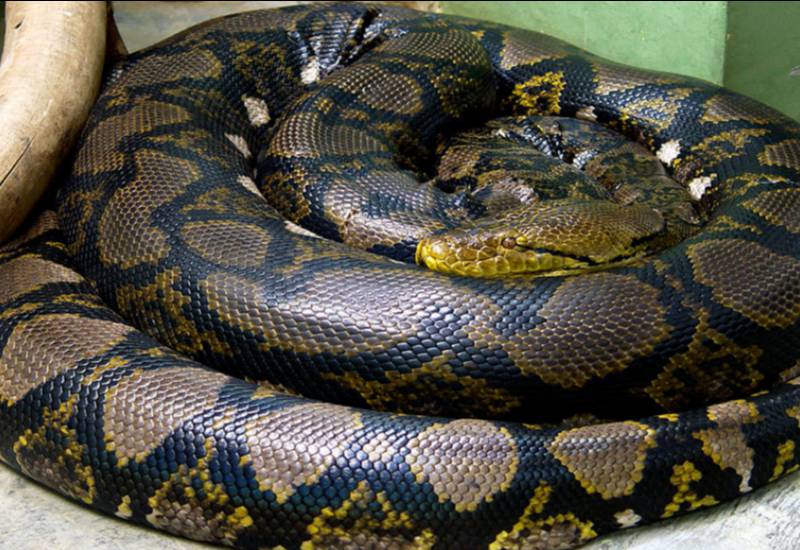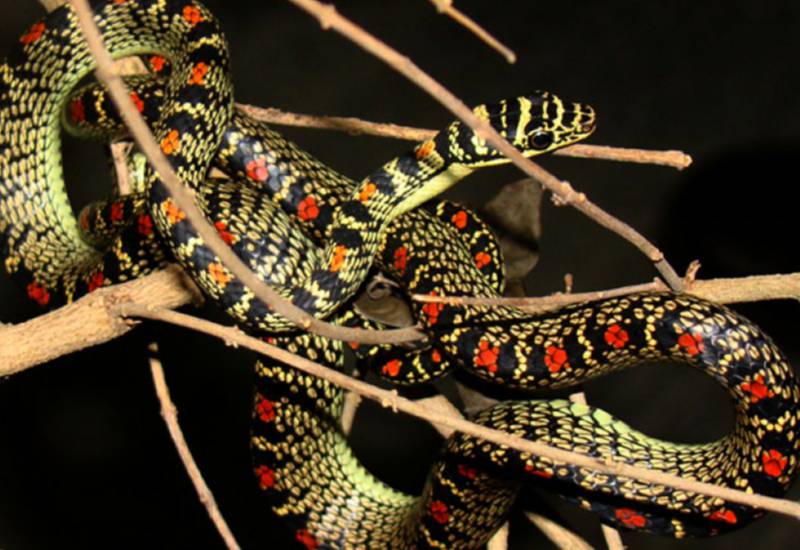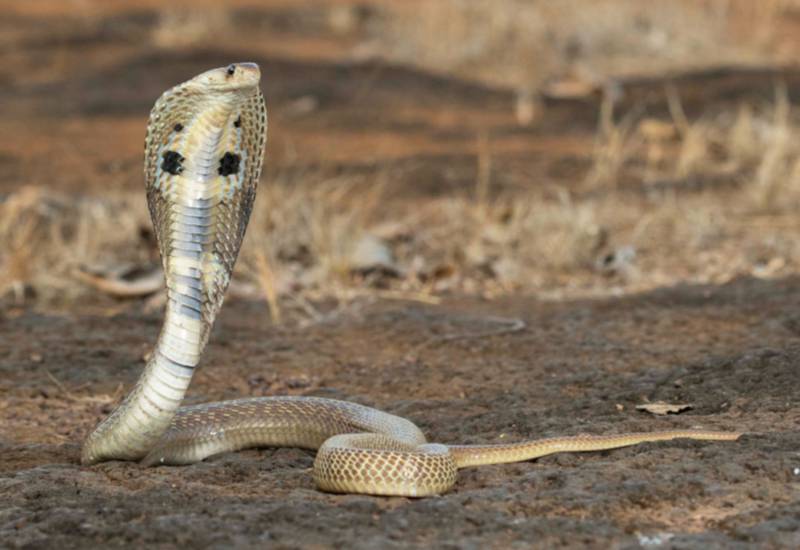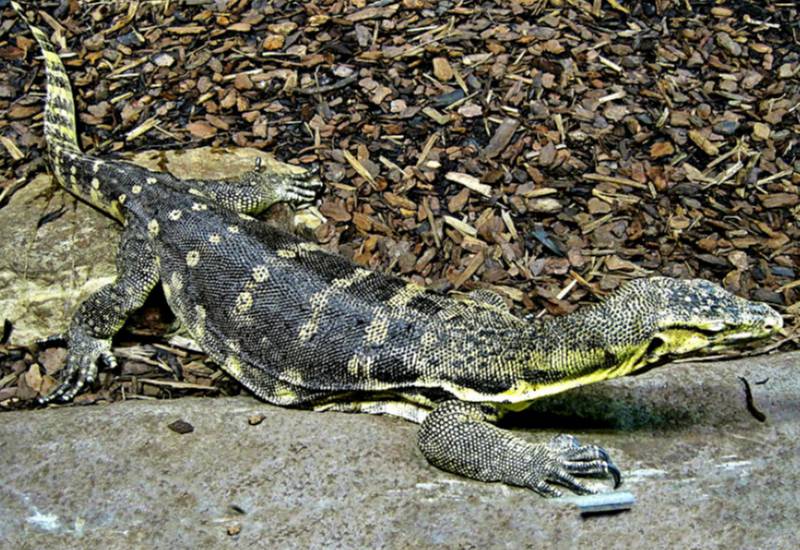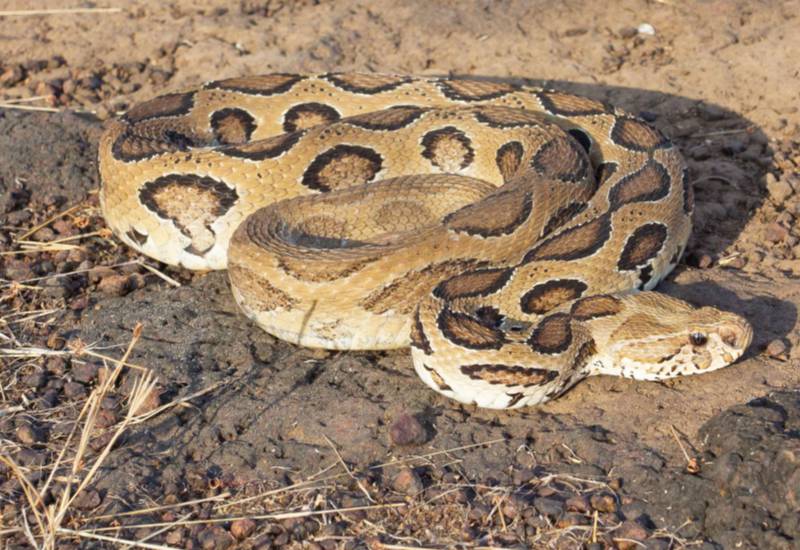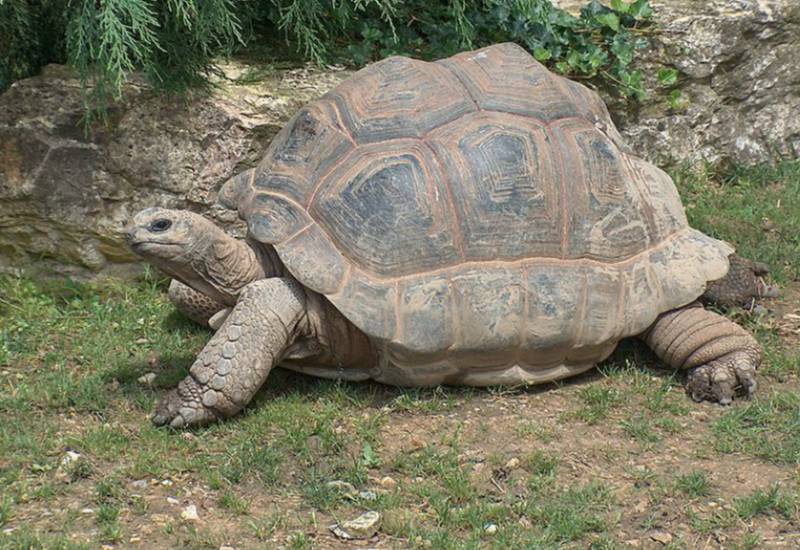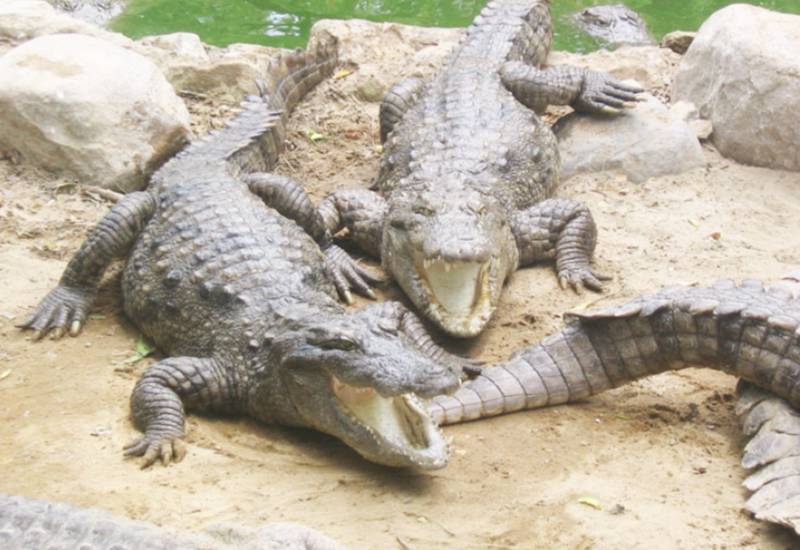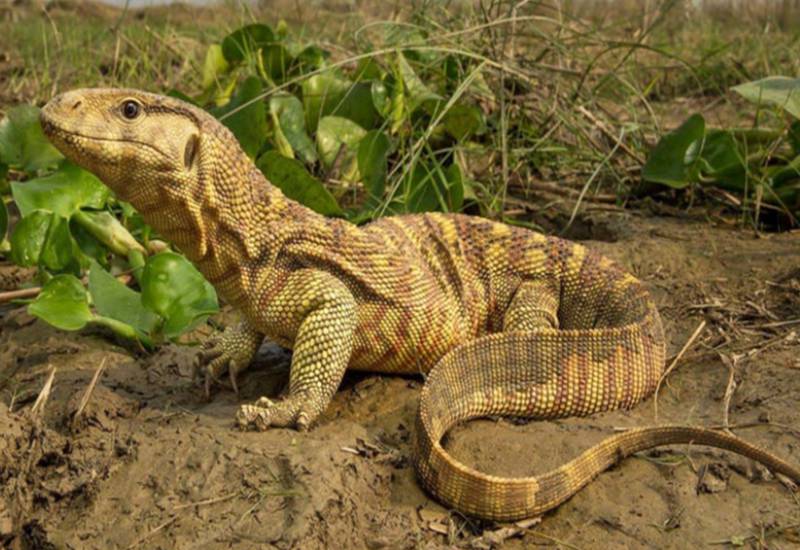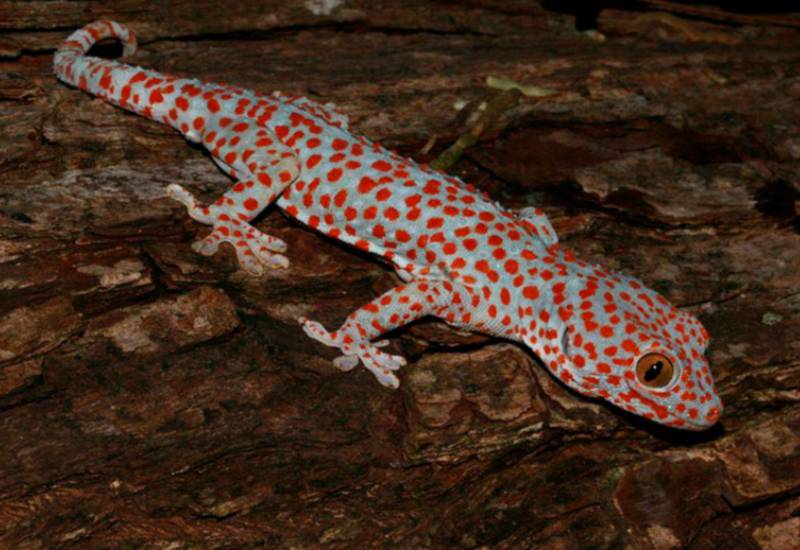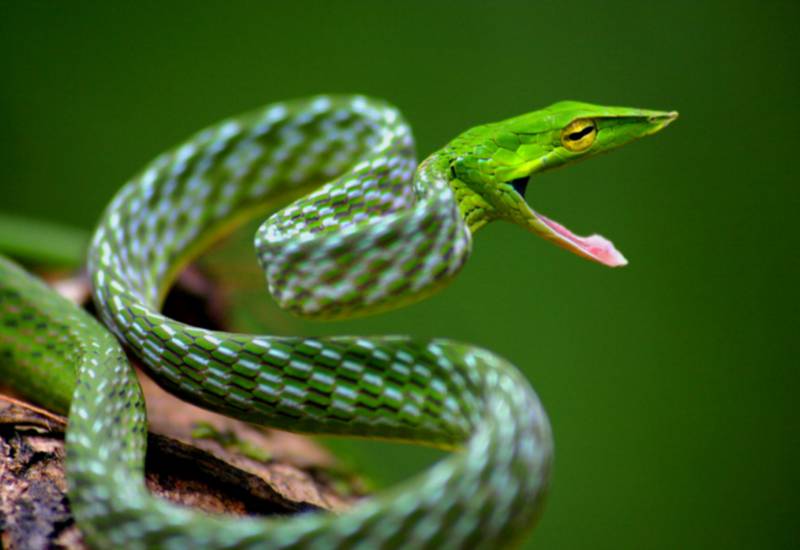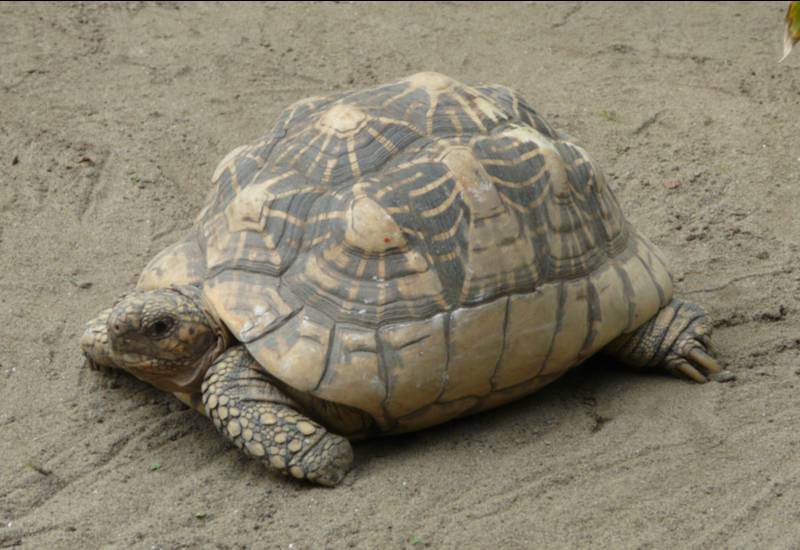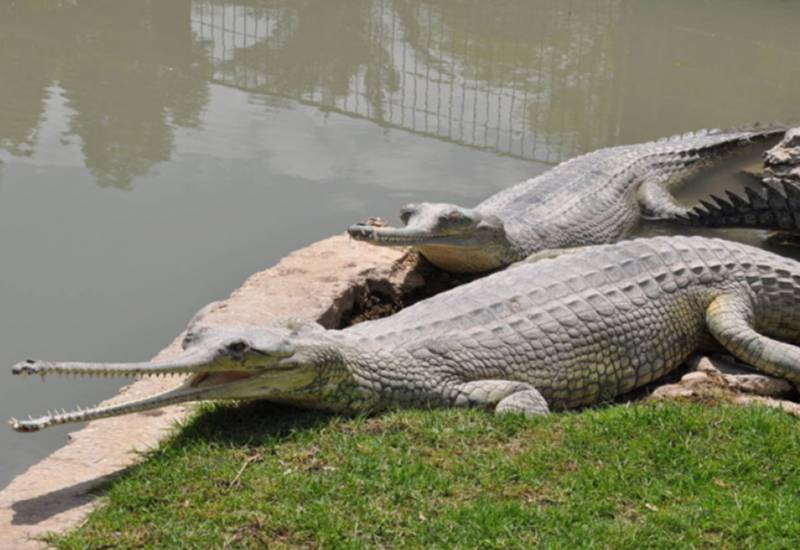- DISTRIBUTION : Reticulated pythons are found in South Asia from the Nicobar Islands India Pakistan Bangladesh Burma Thailand Laos Cambodia Vietnam Malaysia and Singapore east through Indonesia and the Indo Australian Archipelago and the Philippines.
- HABITAT : The reticulated python lives in rain forests woodlands and nearby grasslands. It is also associated with rivers and is found in areas with nearby streams and lakes.
- BEHAVIOUR AND FOOD HABIT : They are nonvenomous constrictors Locomotion is rectilinear and excellent swimmer. Reticulated Pythons are primarily ambush hunters usually waiting until prey wanders within strike range before seizing it in their coils and killing by constriction.These animals are carnivorous. Feeds on Mammals Chickens and other birds.
- FOOD SERVED HERE : Live Chickens
- BRIEF DESCRIPTION :
1. BODY LENGTH- 16 to 22 ft
2. BODY WEIGHT- 140 to 160kg
3. BODY COLOUR - The colour pattern is a complex geometric pattern that incorporats different colours. The colour include olive green black white and gold. The back typically has a series of irregular diamond shapes flanked by smaller markings with light centres. - LIFE-SPAN : 15 to 20 years.
- THREAT : Habitat loss illegal trade and human exploitation
- CONSERVATION STATUS : Not Leasted IUCN Appendix II CITES Schedule I WPA 1972

